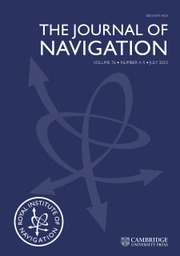No CrossRef data available.
Article contents
Application of simulated AIS data to study the collision risk system of ships
Published online by Cambridge University Press: 12 November 2024
Abstract
In previous research, several computational methods have been proposed to analyse the navigation, transportation safety and collision risks of maritime vessels. The objective of this study is to use Automatic Identification System (AIS) data to assess the collision risk between two vessels before an actual collision occurs. We introduce the concept of an angle interval in the model to enable real-time response to vessel collision risks. When predicting collision risks, we consider factors such as relative distance, relative velocity and phase between the vessels. Lastly, the collision risk is divided into different regions and represented by different colours. The green region represents a low-risk area, the yellow region serves as a cautionary zone and the red region indicates a high-alert zone. If a signal enters the red region, the vessel's control system will automatically intervene and initiate evasive manoeuvres. This reactive mechanism enhances the safety of vessel operations, ensuring the implementation of effective collision avoidance measures.
- Type
- Research Article
- Information
- Copyright
- Copyright © The Author(s), 2024. Published by Cambridge University Press on behalf of The Royal Institute of Navigation



